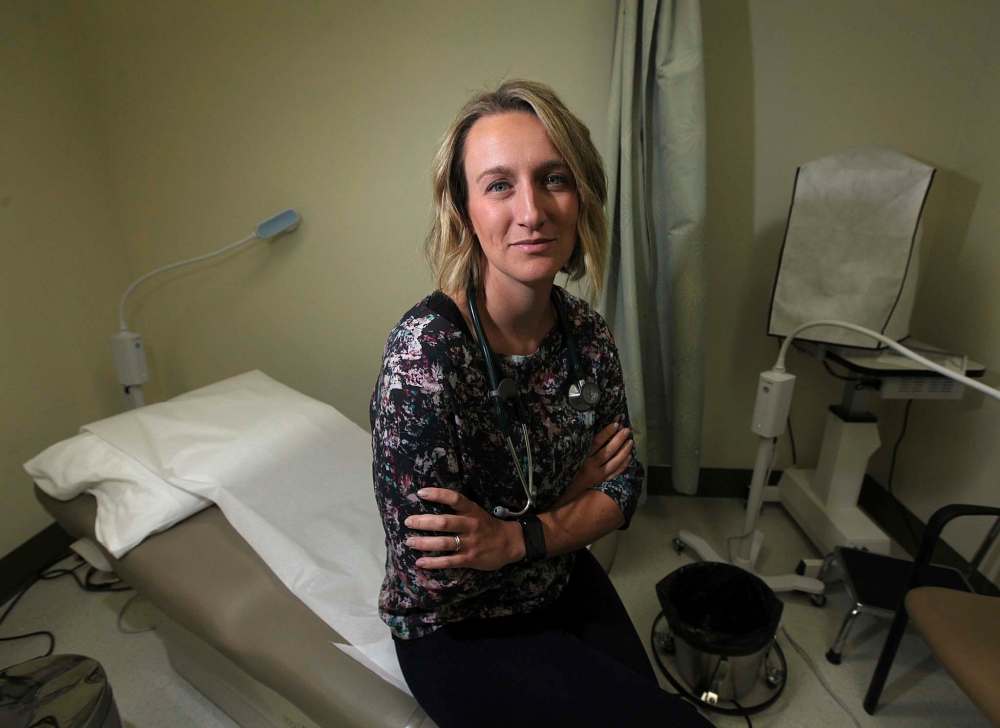Use of opioids antidote jumped 70 per cent in 2016; numbers climbing this year
Advertisement
Read this article for free:
or
Already have an account? Log in here »
To continue reading, please subscribe:
Monthly Digital Subscription
$0 for the first 4 weeks*
- Enjoy unlimited reading on winnipegfreepress.com
- Read the E-Edition, our digital replica newspaper
- Access News Break, our award-winning app
- Play interactive puzzles
*No charge for 4 weeks then price increases to the regular rate of $19.00 plus GST every four weeks. Offer available to new and qualified returning subscribers only. Cancel any time.
Monthly Digital Subscription
$4.75/week*
- Enjoy unlimited reading on winnipegfreepress.com
- Read the E-Edition, our digital replica newspaper
- Access News Break, our award-winning app
- Play interactive puzzles
*Billed as $19 plus GST every four weeks. Cancel any time.
To continue reading, please subscribe:
Add Free Press access to your Brandon Sun subscription for only an additional
$1 for the first 4 weeks*
*Your next subscription payment will increase by $1.00 and you will be charged $16.99 plus GST for four weeks. After four weeks, your payment will increase to $23.99 plus GST every four weeks.
Read unlimited articles for free today:
or
Already have an account? Log in here »
Hey there, time traveller!
This article was published 10/05/2017 (3151 days ago), so information in it may no longer be current.

Opioids such as fentanyl are creating increasing levels of distress in Winnipeg, with paramedics being called upon ever more frequently to administer a life-saving drug.
Last year, city paramedics administered the antidote naloxone on 715 occasions, compared with 419 times in 2015 — a 70 per cent increase. In the first three months of this year, the numbers have continued to climb.

“As a trend, it is certainly alarming,” said Dr. Joss Reimer, medical director of health with the Winnipeg Regional Health Authority.
Reimer said in the first quarter of 2017, paramedics administered naloxone on 210 calls where they felt a life was in danger.
She said authorities cannot say — without conducting a case-by-case analysis — how many suspected overdoses involved fentanyl. In some cases, opioids such as morphine, oxycodone or methadone could have precipitated the emergency treatment.
“We know that there is a lot of fentanyl out there… so we presume that fentanyl is a major part of this,” Reimer said.
Worried about the growing opioid problem, which has reached crisis proportions in British Columbia and in a number of U.S. states, the province has stepped up the distribution of naloxone kits and launched a fentanyl awareness campaign targeting Manitoba youth.
Amy McGuinness, spokeswoman for Health Minister Kelvin Goertzen, said the increased presence of opioids in the province is “of great concern.”
“While we know naloxone has the potential to save lives, the illicit use of fentanyl and other opioids still has devastating impacts,” she said in an email.
McGuinness said the government has acted quickly to expand the distribution of naloxone across the province. The life-saving kits are now available free of charge to individuals at 23 locations across Manitoba.
“Public health officials continue to look at both immediate and long-term actions needed to prevent and respond to overdoses in Manitoba,” she said.
The NDP’s health critic, Matt Wiebe, said more needs to be done, including reducing treatment waits for addicts.

“We’ve asked the government to consider this a public health crisis,” he said. “There needs to be more addictions funding, and there needs to be more crisis beds for those who are suffering from addictions.”
Wiebe added a failure in last month’s provincial budget to significantly boost funding to treat opioid addiction is “a big concern.”
Reimer said there were two periods in Winnipeg last year when paramedics were particularly busy dealing with opioid overdoses — one in spring and the other in fall.
In May, there was an increase that appeared to coincide with increased training provided to paramedics. A much larger spike occurred in October and November, with no obvious explanation other than increased opioid use. In October, paramedics were called upon to administer naloxone more than 100 times. The next month, they did so on more than 80 occasions.
One of the worst days was the Thursday before the long weekend in November. The Winnipeg Fire Paramedic Service issued an alert about a wave of overdose calls it was receiving.
“We believe that there was either a new shipment of drugs or there was some sort of contamination of drugs going on in Winnipeg because there were quite a few (overdoses) within a 12-hour window — a lot more than what we would usually see in such a short period of time,” Reimer said.
The WRHA, in turn, alerted agencies who work with drug users to warn them of what was afoot. Since then, it has created a “more structured” warning system for future events, Reimer said.

The Winnipeg health official said she can’t say if as many as 715 Winnipeggers would have died last year if they had not received naloxone.
“There’s no way to know what would have happened in those individual circumstances,” she said. “But certainly in all of those (cases), the paramedics felt it was serious enough that they needed to provide life-saving medication.”
The number of deaths from opioids such as fentanyl are tabulated by the chief medical examiner’s office after toxicology and autopsy reports. The numbers for 2016 are still incomplete.
An official with the medical examiner’s office said Tuesday that so far, it has recorded 17 deaths in Manitoba for 2016 that were directly or indirectly caused by fentanyl overdose. In 2015, there were 20 fentanyl deaths.
Meanwhile, there were 12 deaths in 2016 attributed to carfentanil — an even more an even more powerful opioid. In 2015, there were no deaths from carfentanil in Manitoba.
larry.kusch@freepress.mb.ca

